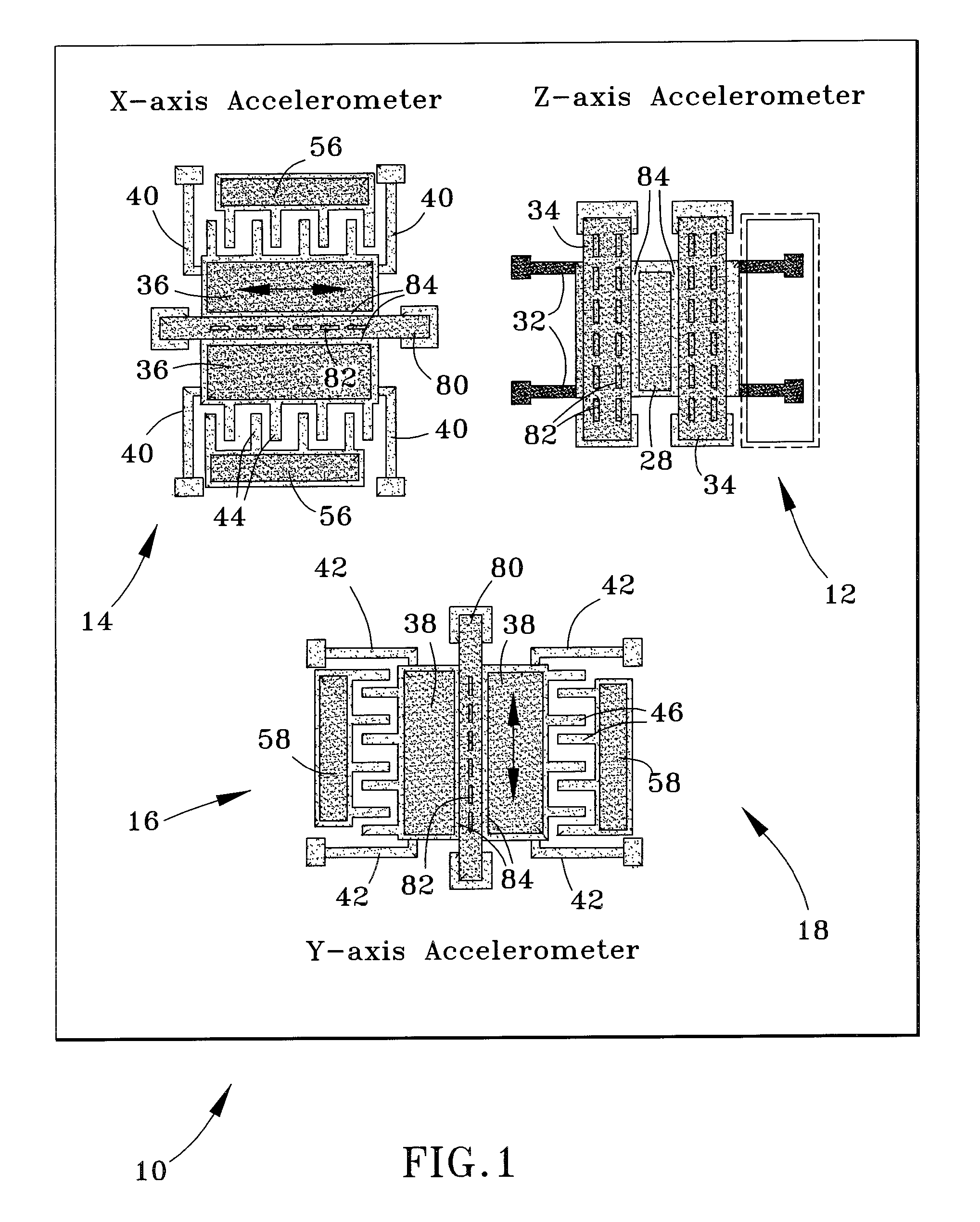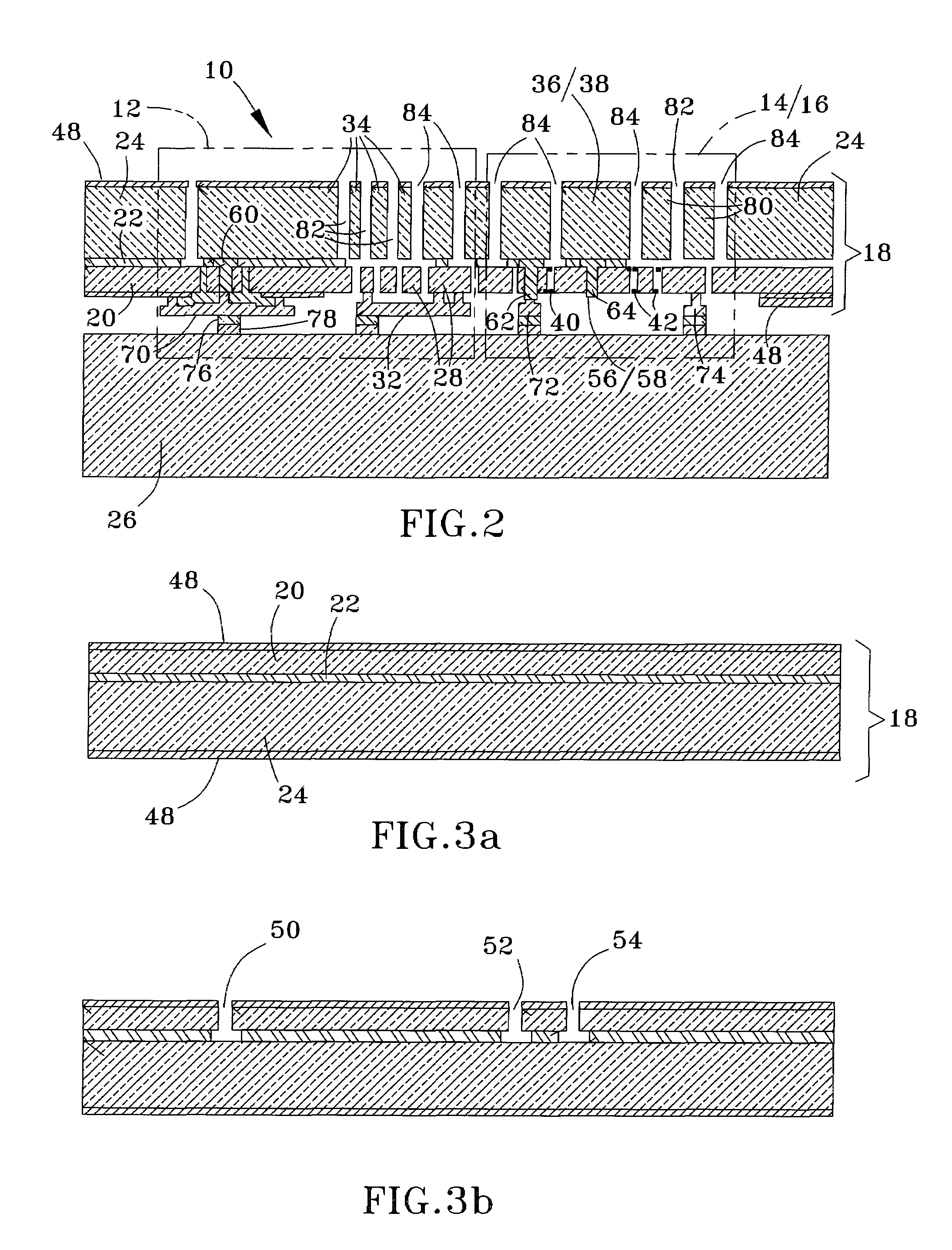Three-axis inertial sensor and method of forming
a three-axis inertial sensor and sensor technology, applied in the direction of speed/acceleration/shock measurement, acceleration measurement in multiple dimensions, instruments, etc., can solve the problems of small sensor size, low sensitivity of bulk micromachined sensor, and large sensor siz
- Summary
- Abstract
- Description
- Claims
- Application Information
AI Technical Summary
Benefits of technology
Problems solved by technology
Method used
Image
Examples
Embodiment Construction
[0018]FIG. 1 schematically represents a plan view of a three-axis inertial sensor chip 10 containing z-axis, x-axis, and y-axis inertial sensing devices 12, 14 and 16, respectively, all of which are formed with the use of an SOI wafer (18 in FIGS. 2 and 3a through 3l) bonded to substrate 26 (FIGS. 2, 3k, and 3l). The substrate 26 may be formed of glass or a semiconductor material, but is preferably a silicon wafer fabricated to contain an integrated circuit, more preferably a silicon wafer with CMOS circuitry (hereinafter, a CMOS wafer 26). As is conventional, the SOI wafer 18 is shown in FIGS. 2 and 3a through 3l as including an electrically-conductive (e.g., doped silicon) device layer 20 separated from an electrically-conductive (e.g., doped silicon) handle layer 24 by an electrically-insulative buried oxide (BOX) layer 22. While the SOI wafer 18 is preferred, it will become evident to those skilled in the art that other materials and processes could be employed to fabricate a th...
PUM
| Property | Measurement | Unit |
|---|---|---|
| conductive | aaaaa | aaaaa |
| mass | aaaaa | aaaaa |
| electrically | aaaaa | aaaaa |
Abstract
Description
Claims
Application Information
 Login to View More
Login to View More - R&D
- Intellectual Property
- Life Sciences
- Materials
- Tech Scout
- Unparalleled Data Quality
- Higher Quality Content
- 60% Fewer Hallucinations
Browse by: Latest US Patents, China's latest patents, Technical Efficacy Thesaurus, Application Domain, Technology Topic, Popular Technical Reports.
© 2025 PatSnap. All rights reserved.Legal|Privacy policy|Modern Slavery Act Transparency Statement|Sitemap|About US| Contact US: help@patsnap.com



